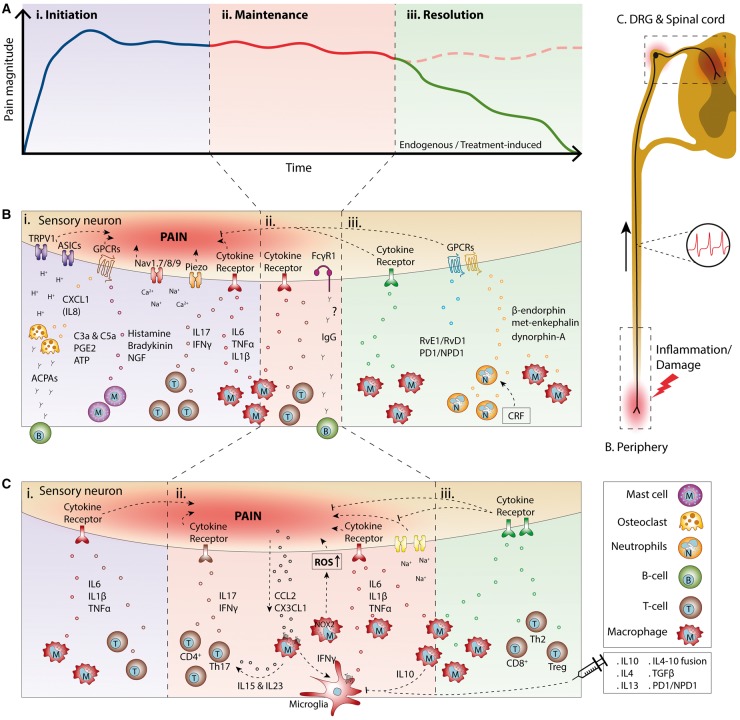Fig. 1.
Overview of the role of immune cells and their mediators at different stages of pain
(A) Time course of chronic pain induced by inflammation or damage visualizing the different stages of pain: (i) initiation, (ii)maintenance and (iii) resolution. (B and C) Schematic overview of the different types of immune cells and mediators modulating pain at different sites and during the different stages (i–iii) of pain shown in (A). (B) During inflammation or tissue damage, resident and immune cells recruited to the inflamed or damaged site secrete inflammatory mediators that act on peripheral nerves innervating the affected tissue. (C) Similarly, different immune cells migrate to the spinal cord and/or the dorsal root ganglia to modulate pain sensitivity during the different phases of pain. ACPA: anti-citrullinated protein antibody; ASIC, acid-sensing ion channel; ATP: adenosine triphosphate; CCL2: chemokine (C-C motif) ligand 2; CRF: corticotropin-releasing factor; CX3CL1: chemokine (C-X3-C motif) ligand 1; Fcγ1: Fcγ type 1 receptor; GPCR: Gprotein-coupled receptor; NGF: nerve growth factor; PD1/NPD1: protectin D1/neuroprotectin D1; ROS: reactive oxygen species.

